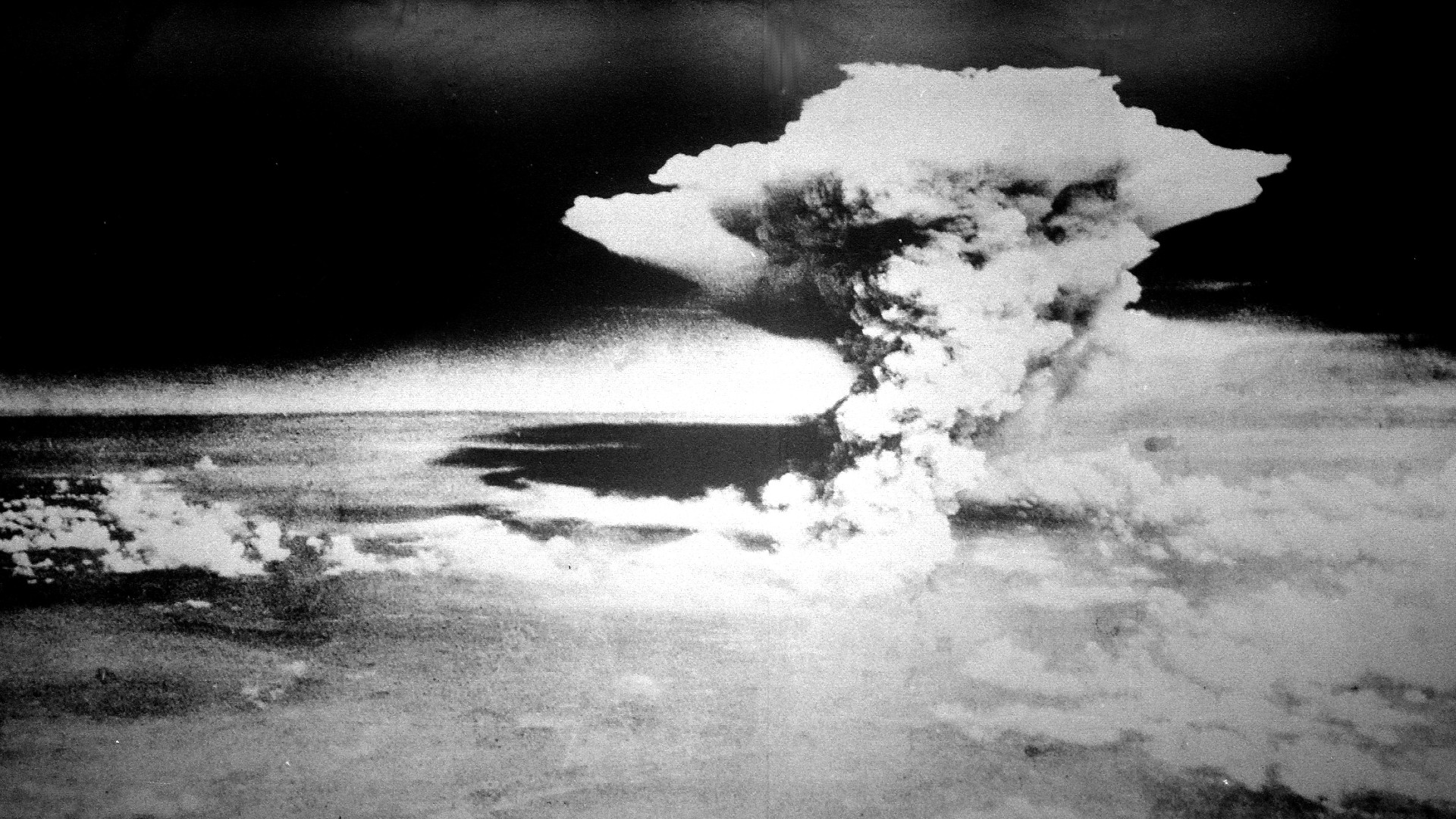Cold War: Origins, combatants and leaders
The Cold War was a decades-long diplomatic and military standoff between the Soviet Union and the United States

- Who started the Cold War?
- The arms race
- The Korean War
- The Space Race
- Berlin and the Cold War
- McCarthyism and The Red Scare
- The Cuban missile crisis
- The global Cold War
- What was détente?
- Soviet war in Afghanistan
- The Reagan administration
- Perestroika and glasnost
- Fall of the Berlin Wall
- The end of the Cold War
- Additional resources
- Bibliography
The Cold War was an ideological conflict between the capitalist United States and the communist Soviet Union, and their respective allies. Despite being called a war, it was not a direct military confrontation between the two sides. Merriam Webster defines a cold war as a "conflict over ideological differences carried on by methods short of sustained overt military action and usually without breaking off diplomatic relations."
Tensions and hostilities between the two superpowers fluctuated throughout the 20th century, becoming stronger at the end of World War II, before the conflict finally collapsed in the early 1990s.
Who started the Cold War?
The Cold War was not a war in the traditional sense, though it did feature outbreaks of armed conflict such as in Vietnam and Korea. According to Odd Arne Westad, professor of history at Yale University, the instigator of the Cold War is tricky to identify, because the conflict emerged gradually from ideological differences.
"To me, the Cold War is primarily a conflict about how best to organize society between liberal capitalist ideas and socialist ideas that come out of the period of industrialization in the late 19th century," Westad told All About History magazine. "Sometime during the Second World War this ideological conflict became a conflict centred on two superpowers, the United States and the Soviet Union."
The arms race
In August 1945, the U.S. dropped two atomic bombs on the Japanese cities of Hiroshima and Nagasaki. This event signaled the end of World War II, following VE day earlier in the year.
By 1949, the Soviet Union successfully tested its first atomic bomb. No longer the world's only nuclear power, the U.S. began building its stockpile of nuclear bombs and developing larger, more destructive weapons. President Truman approved the development of the hydrogen bomb only for the Soviet Union to once again quickly catch up, according to History Today.
The Korean War

The first hotspot of the Cold War, when the two sides came into military conflict — albeit indirectly — was the Korean War, which took place between 1950 and 1953. At the end of World War II, Korea, a former territory of Japan, was divided along its 38th parallel, and an internal border was established between the communist North Korea backed by the Soviet Union and the Western-leaning South Korea, according to the Imperial War Museum.
Get the world’s most fascinating discoveries delivered straight to your inbox.
On June 25, 1950, North Korea, with support from the USSR (including covert operations and providing aircraft and medical support), invaded South Korea. The United Nations quickly arranged support for the south, and troops from the U.S., U.K., Australia, Canada, India, New Zealand and South Africa, among others, were sent to oppose North Korea. In 1951, China, another communist nation, sent troops in support of North Korea, and the two sides reached a stalemate. In 1953 an armistice was agreed that established a new border close to the 38th parallel.
The Space Race

As the arms race continued on the ground, another technological race was taking place to reach space. The space race began in 1955 when the U.S. announced that it intended to launch its first satellite. The Soviet Union responded by declaring it intended to also launch a satellite, according to the Royal Museums Greenwich.
In 1957 the Soviet satellite Sputnik 1 was successfully launched into orbit. On April 12, 1961, Soviet cosmonaut Yuri Gagarin became the first person to travel to space, orbiting the Earth once and returning safely in the spacecraft Vostok 1.
However, in 1969 the U.S. achieved one of the most significant victories in the space race when Neil Armstrong became the first man to walk on the moon. The space race came to a symbolic end in 1975 when the first joint U.S.-Soviet mission was launched and Tom Stafford and Alexi Leonov shook hands in space.
Berlin and the Cold War
Following the defeat of the Nazis on VE Day — the end of World War II in Europe — Germany and Austria were divided into four separate zones governed by France, the U.K., the U.S. and the Soviet Union, according to the National Army Museum in London.
Berlin was similarly divided into four zones of occupation, despite the city falling within the Soviet Zone of the country. In June 1948, the first major international crisis of the Cold War occured when the Soviet Union blockaded West Berlin from the rest of the country following controversial currency reforms, according to the Imperial War Museum in London. With food supplies running out in West Berlin, a massive airlift was organized by the U.S. and its allies, which continued until May 1949 when the blockade was lifted. In total, the U.S. and its allies delivered about 2.3 million tons of cargo.
According to NATO, between 1949 and 1961 3 million citizens of the German Democratic Republic (GDR) in the Soviet-operated zone fled into the Federal Republic of Germany (FRG), which was formed in 1949 when the American, British and French zones of Germany were unified. The loss of so many workers caused major economic issues for East Berlin, so in response to this exodus the Soviets constructed the Berlin Wall in the early hours of Aug. 13, 1961, which physically divided the city and stopped East Berliners from leaving freely.
"This is a city that has to be taken apart and put back together again," journalist Mildred Raynolds Trivers wrote in The Virginia Quarterly Review in 1962. "Berlin is not even one city, it is two cities, each with its separate government, separate currency, separate telephone systems, separate transportation systems."
McCarthyism and The Red Scare
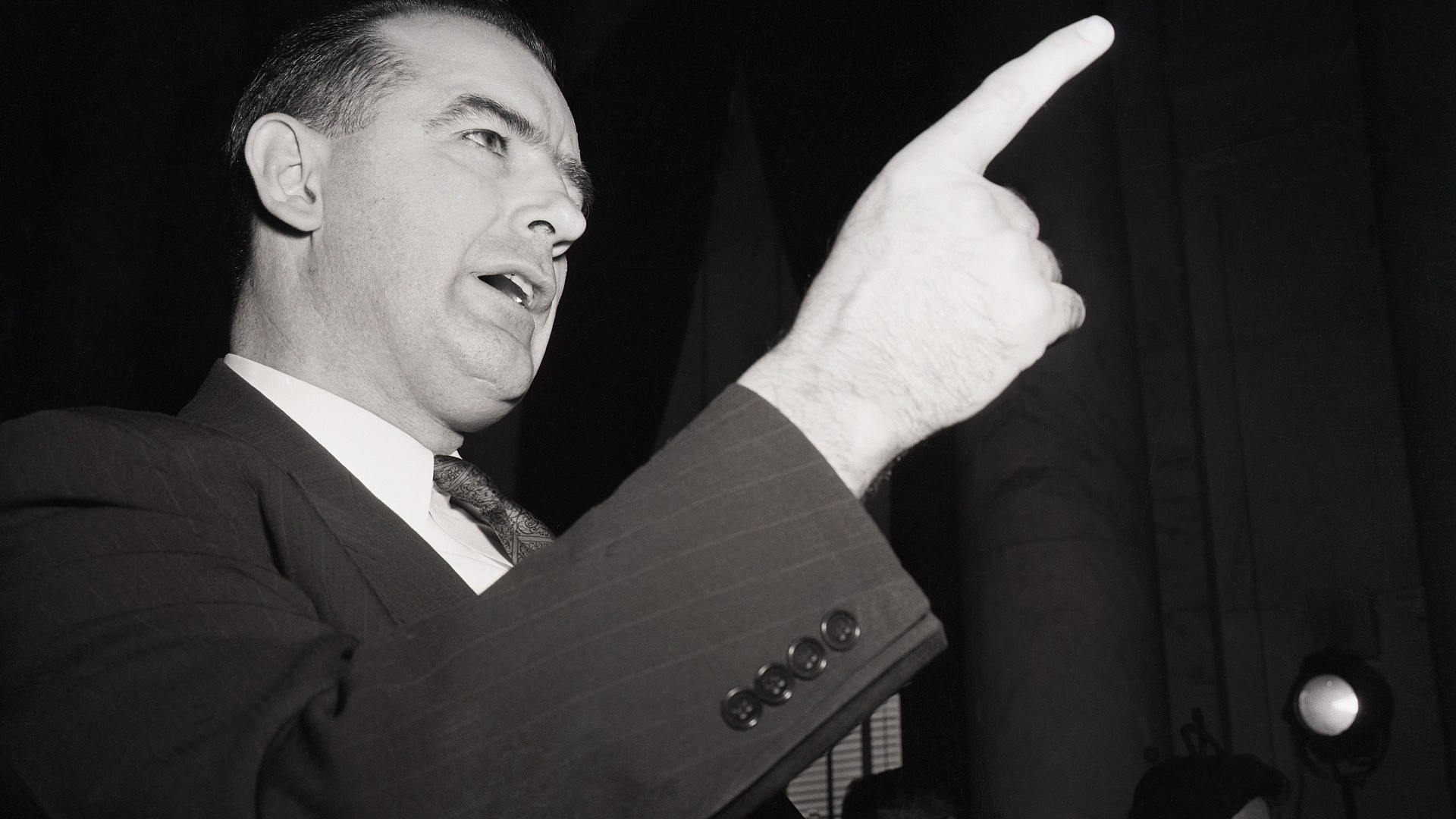
Senator Joseph McCarthy, a right-wing Republican caused a nationwide panic during the late 1950's when he launched a number of probes into communist infiltration of various state departments and organisations, including the White House and the U.S. Army, according to The Miller Centre. What resulted was not just a governmental panic, but a witch hunt across the entire United States.
One of the most highly publicised aspects of the 'Red Scare' was the impact upon Hollywood. McCarthy's House of Un-American Activities investigated a number of Hollywood artists suspected of having communist links. The 'Hollywood Ten' were the ten most prominent figures, who were placed on a blacklist and forbidden from working in Hollywood until they were cleared of charges.
According to Stanford Business, artists who worked with those who had their name on the blacklist saw their chances of employment dropping by 13%. The effect of the blacklist would only be broken when one of its key victims, screenwriter Dalton Trumbo, was hired to write the screenplay to the 1960 Kirk Douglas film Spartacus, according to The Guardian.
The Cuban missile crisis
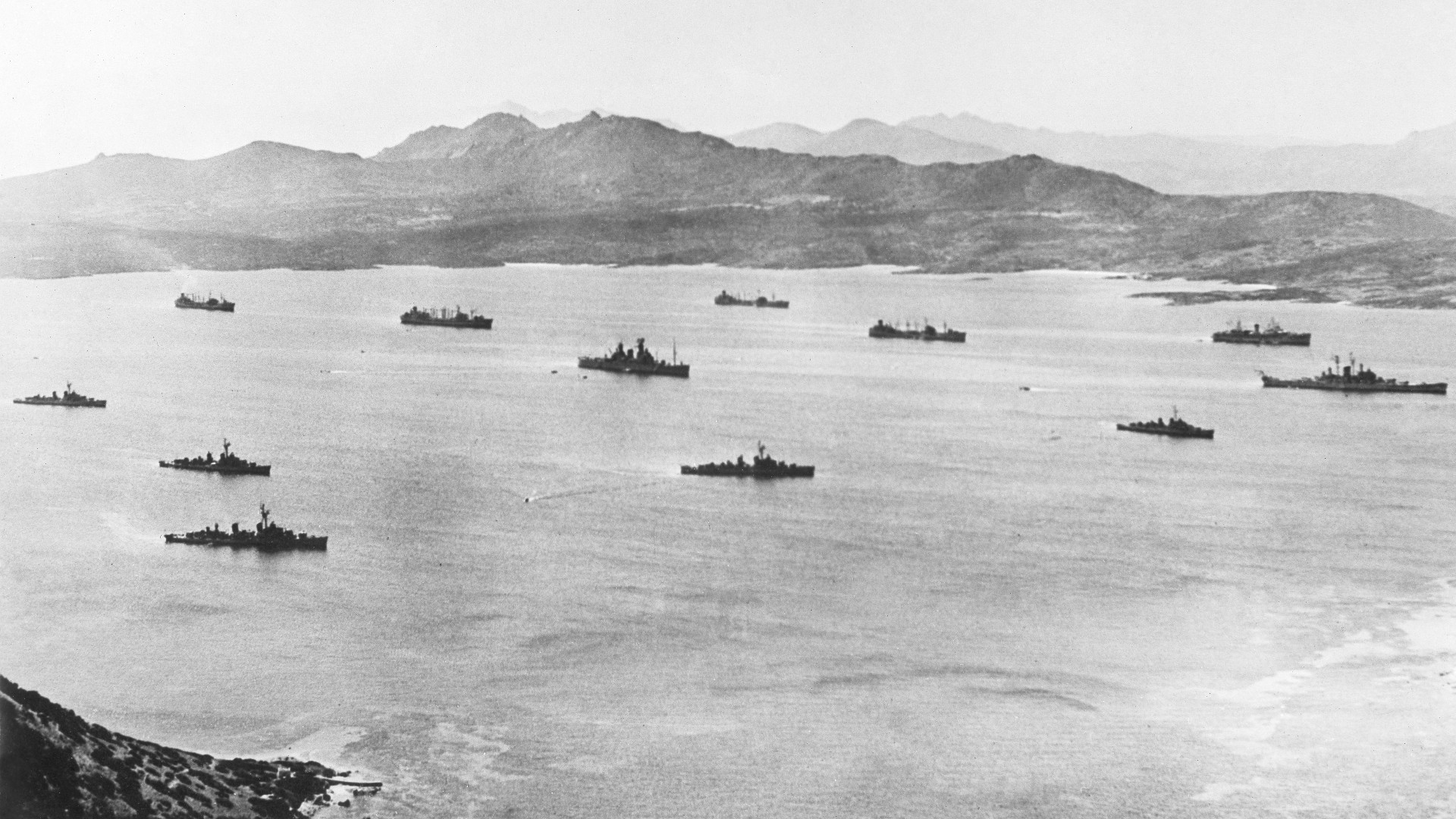
In 1959, Fidel Castro took control of Cuba following a long revolution against the island’s capitalist government and aligned his country with the Soviet Union. This intensified tensions between Cuba and the U.S., and the U.S. responded by becoming involved in the failed Bay of Pigs invasion — an attempt by exiled Cubans backed by U.S. intelligence services to land in Cuba and overthrow Castro’s government.
According to John T. Cortell at the U.S. Department of Defense, U.S. spy planes first discovered Soviet nuclear missile bases in Cuba on Aug. 29, 1962 and then discovered ballistic missiles in October. These followed a number of intelligence reports gathered over the preceding years which provided further evidence of missiles on the island. The missiles were discovered to be able to reach U.S. shores.
U.S. president John F. Kennedy ordered a naval blockade of Cuba, and on Oct. 22 he briefed the nation on the gravity of the situation, according to the JFK Library.
"Neither the United States of America nor the world community of nations can tolerate deliberate deception and offensive threats on the part of any nation, large or small. We no longer live in a world where only the actual firing of weapons represents a sufficient challenge to a nation's security to constitute maximum peril. Nuclear weapons are so destructive and ballistic missiles are so swift, that any substantially increased possibility of their use or any sudden change in their deployment may well be regarded as a definite threat to peace," Kennedy said in his address to the nation. The naval blockade was underpinned by a threat of military retaliation and Kennedy was supported by a number of nations.
After a tense five-day standoff, the Soviet Union agreed to remove its missiles from Cuba. However, in a deal that remained secret, the U.S. similarly agreed to remove all nuclear weapons from its bases in Turkey. "Kennedy privately offered a hedged promise on 27th October to withdraw the Jupiter Missiles from Turkey at a future time," Barton J. Bernstein, professor emeritus of History at Stanford University, wrote in 1980 in the journal Political Science Quarterly. The years following the crisis saw a distinct relaxation of tensions, at least directly, between the USSR and the U.S., and led to the Limited Test Ban Treaty which prohibited the testing of Nuclear Weapons.
The global Cold War
The Cold War wasn’t just a conflict between two superpowers; instead, the two superpowers each had a sphere of influence that drew multiple countries into the conflict, and the war’s effect reached almost every corner of the globe. "Some of the most significant effects of the Cold War were outside of Europe and the two superpowers, in Africa, in Asia and in Latin America," Westad told All About History. "Not in a sense that the Cold War came in from the outside but because it had some kind of effect everywhere. It influenced most things, and mostly for the worse, particularly during the latter phase of the 20th century," he said.
One of the key aspects to the global Cold War was the interventions in other countries undertaken by the United States, the USSR and other powers. But what forms did these interventions take? "They are diplomatic and propagandist and you also have a lot of covert operations which are not just military operations," Westad explained. "So when we talk about intervention we are not talking purely about military intervention. Perhaps the most noticeable one from today's perspective, as the after effects have not entirely gone away, is the combined British and American operation in Iran in the early 1950s. The aim was to unseat the government there and replace it with a government led by the then Sha, much more to Western liking. There was a covert operation with people on the ground but also a massive propaganda campaign and economic pressure," Westad said.
What was détente?
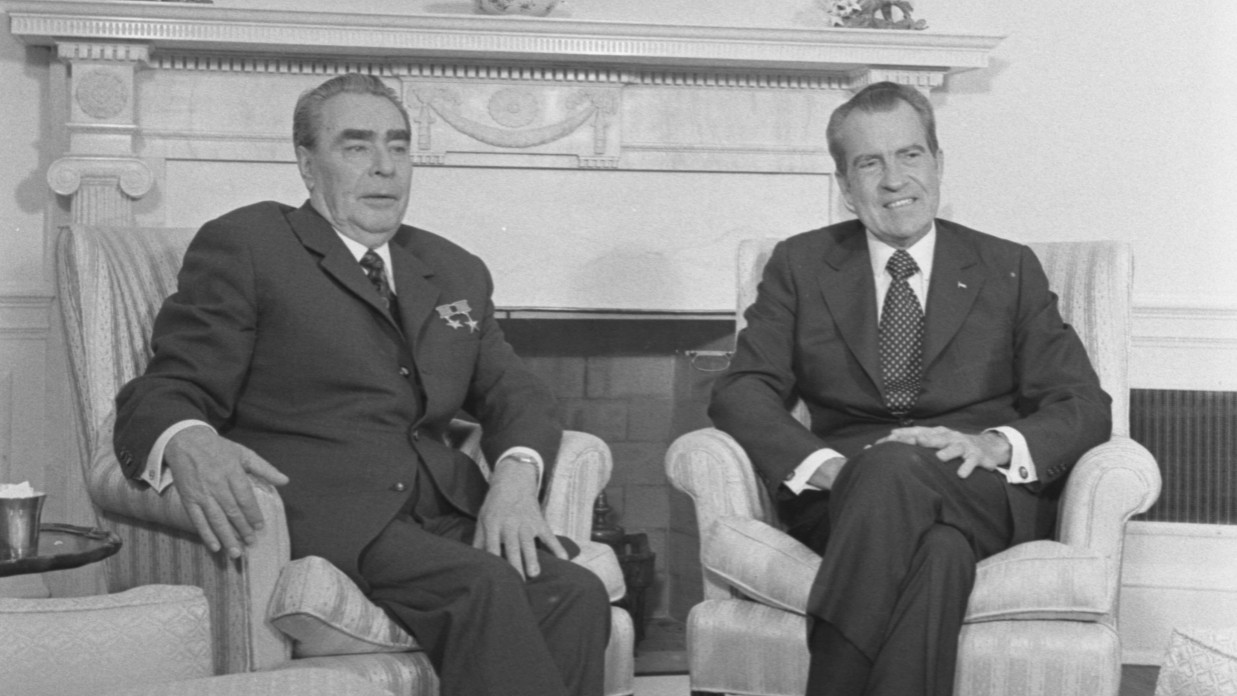
During the 1970s the Cold War entered a phase known as détente, described as "an improvement in the relationship between two countries that in the past were not friendly and did not trust each other," according to the Cambridge online dictionary.
Détente represented a new chapter in diplomatic relations between the superpowers. "During the first half of the 1970s Presidents Richard Nixon and Gerald Ford responded to the aftermath of Vietnam by avoiding the extremes of the era: massive military retrenchment (left) and massive military escalation (right)," Julian E. Zelier, professor of political history at Princeton University, wrote in the journal Diplomatic History in 2009. Instead, a middle ground was reached, and there was significant warming of tensions between the East and the West occurred.
In May 1972, according to the Nixon Foundation, Nixon met with the Soviet leader Leonid Brezhnev for the first of three major summits. In particular, as the Office of the Historian noted, this period was particularly important in terms of arms regulation and led to several important treaties, including the Strategic Arms Limitation Treaties I and II.
Soviet war in Afghanistan
By the end of the 1970s détente was beginning to wane, and hostilities between the two superpowers became more intense. One of the key events that led to this cooling of relations was the 1979 invasion of Afghanistan by the Soviet Union. The USSR sent 1000,000 troops into the country to support the communist government that was under threat from mujahideen rebels, covertly supported by the United States. After a nine-year war in which 122,500 people were killed, the Soviet Union was forced to withdraw.
Many historians have named the Soviet Union’s failed intervention in Afghanistan as the event that marked the beginning of the end for the USSR. "Failure in Afghanistan led to the abandonment of the Brezhnev Doctrine, which mandated Soviet intervention to save communism from counter-revolution in neighboring states,” David C. Gompert, a former U.S. diplomat and acting director of national intelligence, wrote in "Blinders, Blunders, and Wars: What America and China Can Learn" (RAND Cooperation, 2014). “It also set the stage of Mikhail Gorbachev's futile attempt to reform Soviet Politics and economics, the liberation of Eastern Europe, the abandonment of communism and the dissolution of the USSR," Gompert wrote.
The Reagan administration
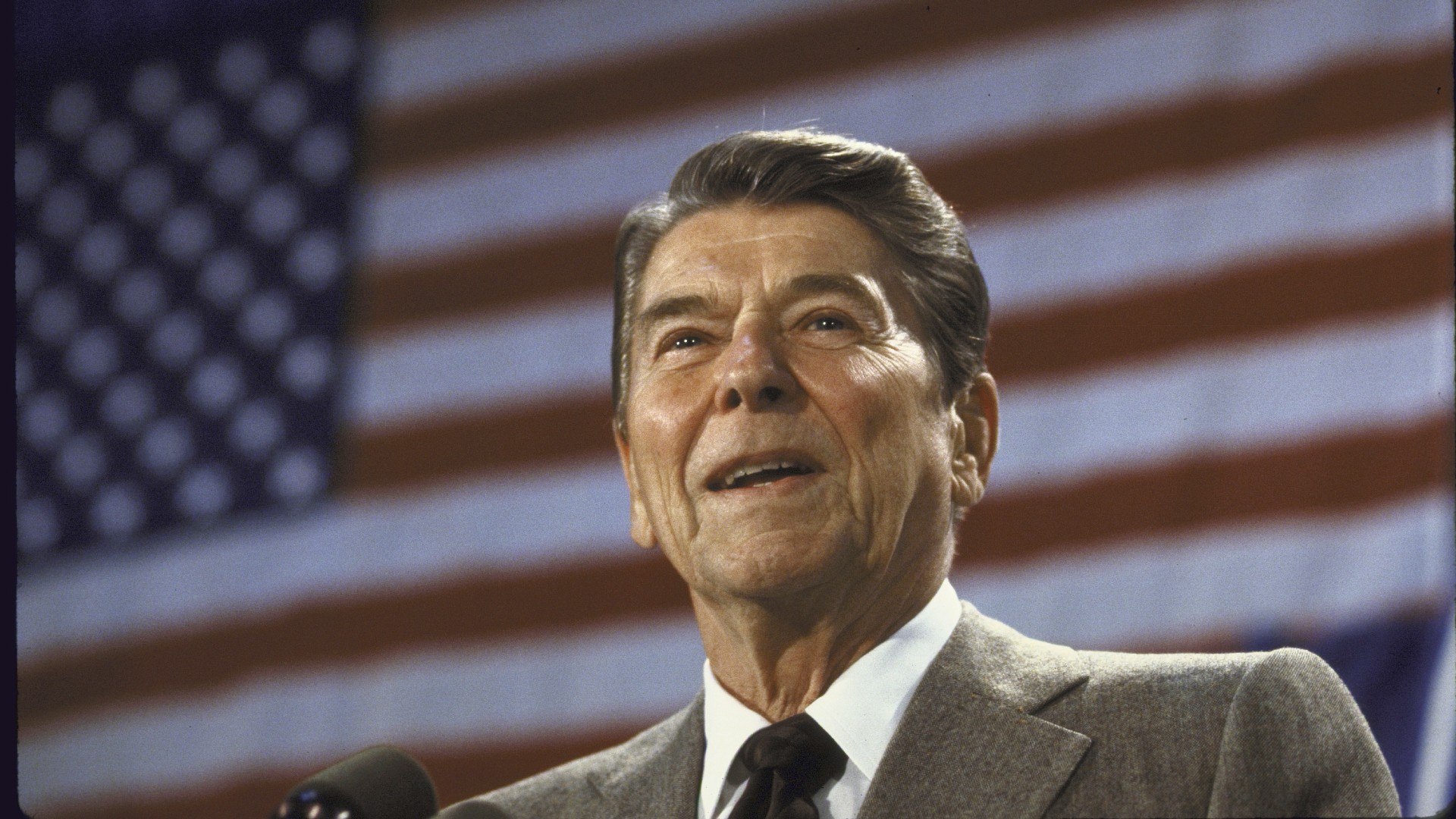
In response to the war in Afghanistan, President Ronald Reagan, who was elected on Nov. 4, 1980, sought a more aggressive approach to Soviet-U.S. relations.
Reagan's strategy was to intensify the arms race. On June 18, 1980, prior to his election, he told staff at the Washington Post that, "it would be of great benefit to the United States if we start a build up [of nuclear weapons]," believing that the USSR would be unable to compete, Lou Cannon, a journalist and biographer, wrote for The Miller Center. Once elected, Reagan openly pursued a more hardline approach toward the USSR, and in a famous speech on March 8, 1983, he referred to the Soviet Union as an "evil empire."
In 1983, Reagan also proposed the Strategic Defence Initiative, a space-based anti-missile system nicknamed "Star Wars" and described by the Atomic Heritage Foundation as "an anti-ballistic missile program that was designed to shoot down nuclear missiles in space." Although never developed, the concept was intended to threaten the USSR by demonstrating both technological and financial advancement.
Perestroika and glasnost
Mikhail Gorbachev took over as president of the Soviet Union in 1985 and ushered in a number of reforms, perhaps the most famous of which was the policy of glasnost. The word glasnost is a,"Russian word, commonly translated in English as 'openness',” Joseph Gibbs, journalism professor at the American University of Sharjah in the United Arab Emirates, wrote in "Gorbachev's Glasnost: The Soviet Media in the First Phase of Perestroika" (Texas A&M University Press, 1999). “Gorbachev aggressively promoted glasnost as a component of his program of reconstruction, or perestroika, of the USSR's sagging economy and inefficient governmental system," Gibbs wrote.
Glasnost allowed Soviet citizens to reflect critically on the country’s own past for the first time, particularly the October Revolution of 1917. "The policy of glasnost in the perestroika era and its continuing, unstoppable momentum allow us to look at ourselves with open eyes, providing us with new knowledge about the many-sided nature of October and its consequences, and enabling us to reflect on many aspects of post-October developments in their true dimensions and significance," Gorbachev wrote in "On My Country and The World" (Columbia University Press, 1999).
Glasnost and the other reforms were intended to modernize the USSR, but they ultimately helped bring the Soviet Union to an end. The policy soon "expanded into pressure for democratization of the Soviet political system," a report from the research organization RAND said in 1990.
Fall of the Berlin Wall

Due to Glasnost and Gorbachev’s policies, by 1989, Cold War tensions had begun to thaw across Europe, including in East and West Germany. An increasing number of public protests had led to the decision to loosen border restrictions between east and West Berlin, though the intention was never completely. On the evening of Nov. 9, 1989, East German official Gunter Schabowski announced that border restrictions between East and West Berlin would be permanently relaxed.
"East Germans will be able to obtain exit visas without delay, allowing them to cross into the West through all border points within Berlin and along the border with West Germany. Tourists who want to return to East Germany can also obtain immediate permission," journalist Anna Tomforde reported in The Guardian at the time.
However, excited Berliners did not wait for visas. By 9pm local time crowds had flocked to the wall, and at midnight the borders were opened fully and people began to chip away at the wall.
Eleven months later the reunification of Germany occurred and it would not be until 1991 that the Soviet Union collapsed, but for many the fall of the Berlin Wall symbolically marked the end of the Cold War. "Ordinary people demanding change took matters into their own hands. They brought down the wall, not armies or world statesmen. And then they danced upon it," Michael R. Meyer, former dean of the Graduate School of Media and Communications at Aga Khan University in Kenya and speechwriter for U.N. secretary general Ban Ki-moon, wrote in "The Year That Changed the World: The Untold Story of the Fall of the Berlin Wall" (Scribner, 2009).
The end of the Cold War
By 1990, Gorbachev had acquiesced to the reunification of Germany and removed all Soviet soldiers from the country. By this time the Soviet Union had also been forced to grant many of its satellite countries independence, such as Ukraine in 1991, according to the Wilson Center. An unsuccessful coup against Gorbachev by communist hardliners further increased support for Boris Yeltsin, who was standing for the pluralist movement and advocated increased liberalization and reforms. Yeltsin led a short campaign of civil resistance which ended the Coup and simultaneously weakened Gorbachev’s influence. On Dec. 25, 1991, Mikhail Gorbachev resigned — effectively ending the Soviet Union, and the conflict with the U.S.
"The Cold War, within the international system of states, ended very clearly with the collapse and fall of the Soviet Union," Westad said.
Additional resources
The John F Kennedy Presidential Library and Museum contains a number of articles and papers relating to JFK's time in the White House and the Cuban Missile Crisis. For those interested in the role played by nuclear weapons during the Cold War, Atomic Heritage Foundation has a variety of interesting sources. The Hoover Institution contains a wealth of information regarding the Red Scare.
Bibliography
- History Today
- Imperial War Museum
- Royal Museums Greenwich
- National Army Museum
- "Building the Berlin Wall" NATO official site
- The Virginia Quarterly Review
- The Miller Centre
- U.S. Department of Defense
- JFK Library
- Political Science Quarterly.
- Nixon Foundation
- Office of the Historian
- David C. Gompert; "Blinders, Blunders, and Wars: What America and China Can Learn" (RAND Cooperation, 2014)
- Joseph Gibbs; "Gorbachev's Glasnost: The Soviet Media in the First Phase of Perestroika" (Texas A&M University Press, 1999)
- Michael R. Meyer; "The Year That Changed the World: The Untold Story of the Fall of the Berlin Wall" (Scribner, 2009)

Callum McKelvie is features editor for All About History Magazine. He has a both a Bachelor and Master's degree in History and Media History from Aberystwyth University. He was previously employed as an Editorial Assistant publishing digital versions of historical documents, working alongside museums and archives such as the British Library. He has also previously volunteered for The Soldiers of Gloucestershire Museum, Gloucester Archives and Gloucester Cathedral.


